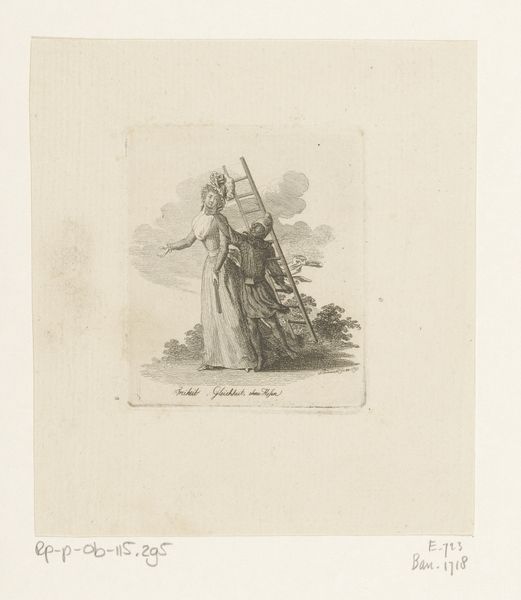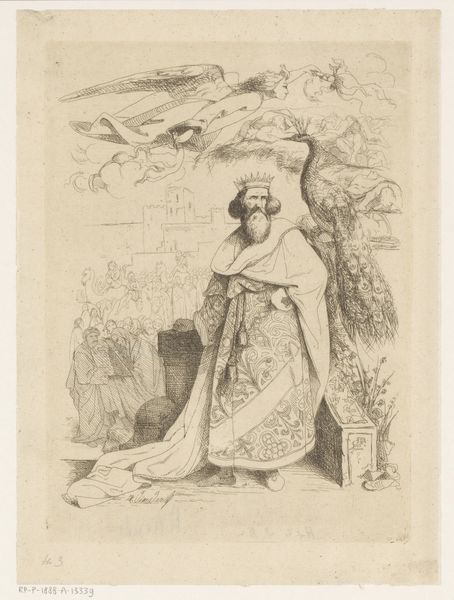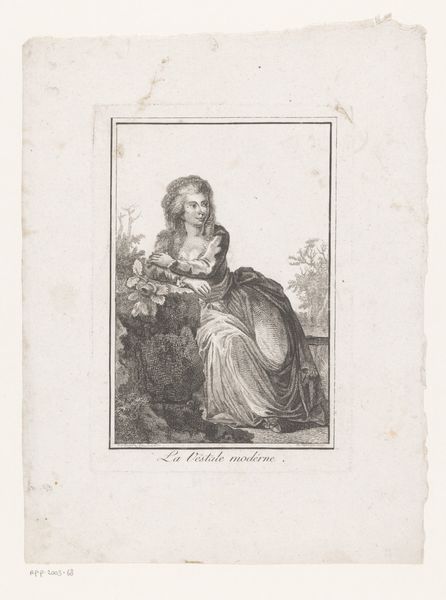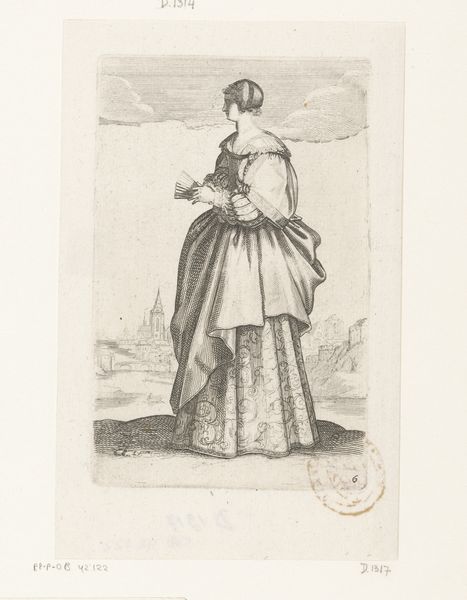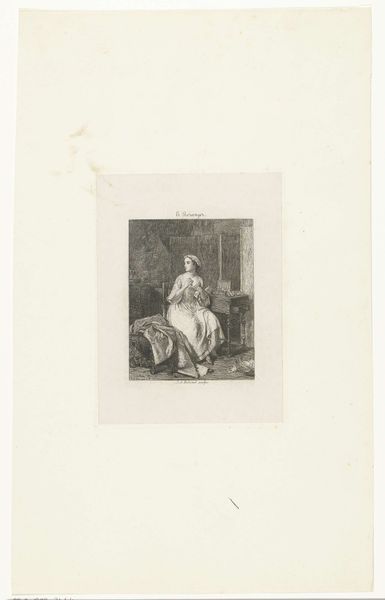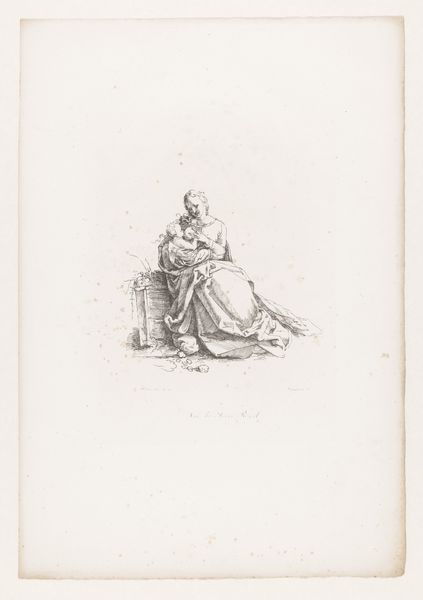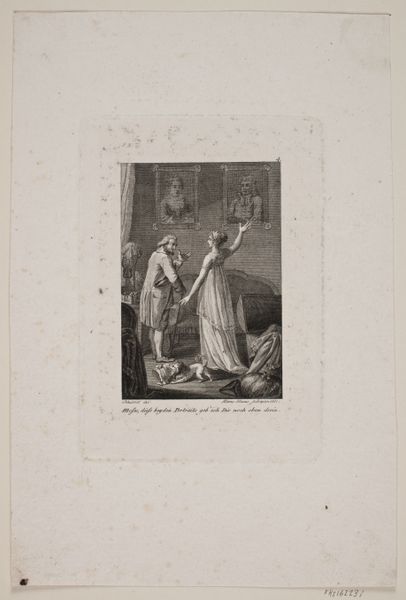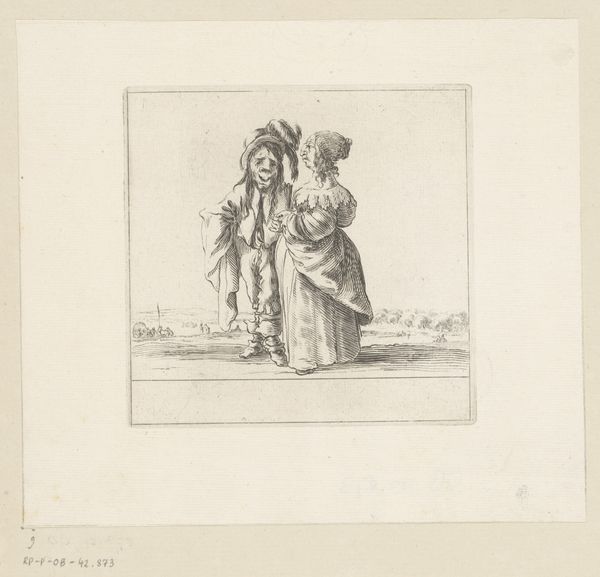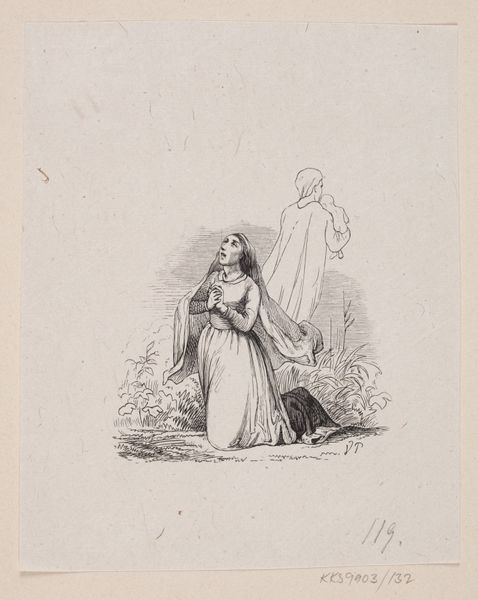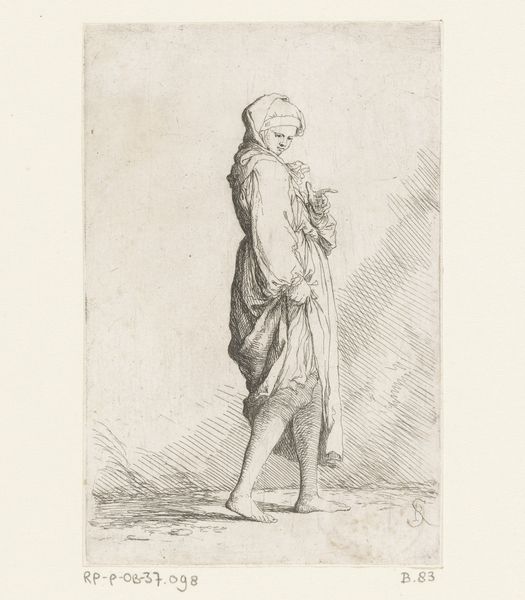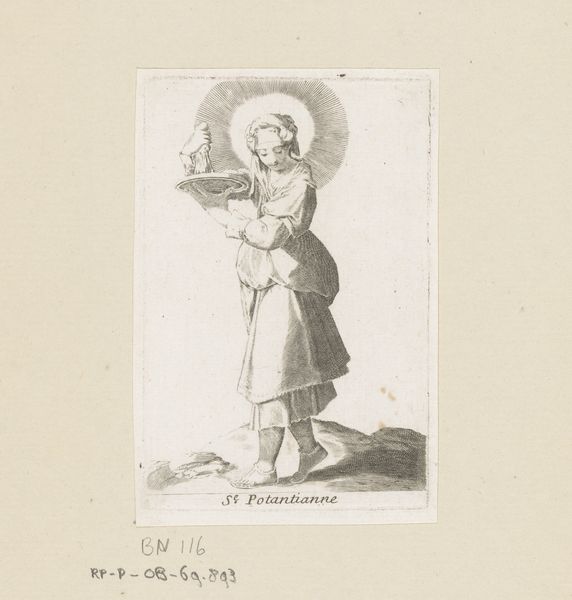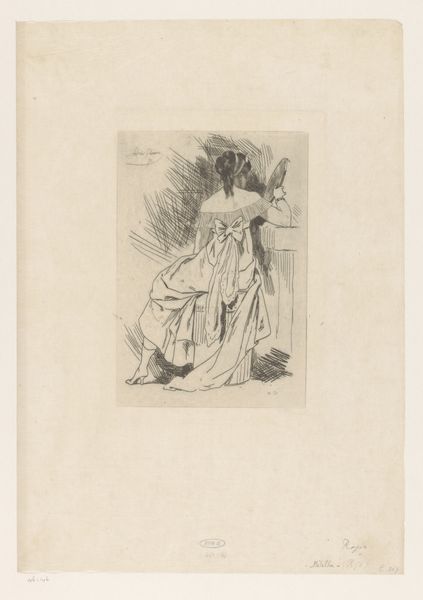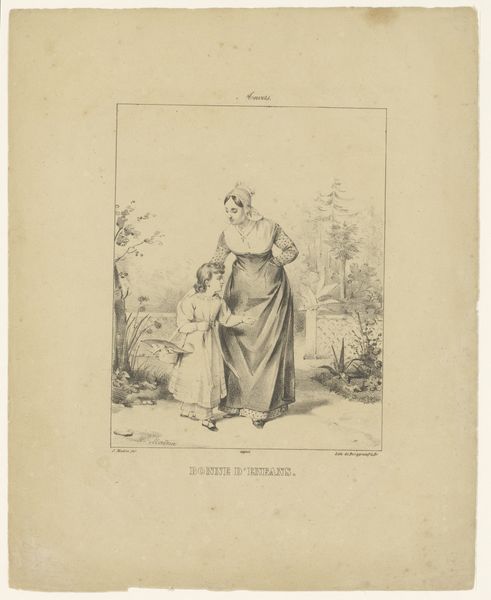
etching
#
portrait
#
ink drawing
#
baroque
#
etching
#
landscape
#
etching
#
history-painting
Dimensions: height 175 mm, width 113 mm
Copyright: Rijks Museum: Open Domain
Editor: This is "Vrouw geknield voor een graf" or "Woman kneeling before a grave," an etching by Jean Baptiste Marie Pierre from 1756. It’s quite a delicate piece; the lines are so fine. The whole scene feels very somber and still. How do you approach an etching like this from a formalist perspective? Curator: Precisely. First, observe the careful articulation of light and shadow. Notice how Pierre uses the etching technique to create varied tonal ranges. The lightest areas define the woman's dress, drawing the eye toward her form, which is contrasted by the darker etched lines describing the architecture and foliage. How does this contrast contribute to the overall composition? Editor: I suppose it highlights the woman as the focal point, separating her from the scene behind? Curator: Indeed. Note, too, the economy of line. Pierre does not belabor the details; rather, he offers the faintest indication of form and texture. He directs the gaze through suggestion. What semiotic elements emerge? Editor: Well, the kneeling figure before a grave… It signals grief, or perhaps repentance. And the cross is such a central element for Baroque period. Curator: A perceptive observation. Further examine how the figure's downward gaze interacts with the vertical thrust of the cross. How might that spatial dynamic reinforce the reading you've proposed? Editor: Maybe it signifies submission to a higher power during grief? The way the body's positioned makes it a focal point and symbol of faith during tragedy. Curator: Precisely, consider how effectively Pierre employs visual language, such as semiotics, to convey the image’s complex thematic substance by employing the materiality, light, shadows, and the position of each figure and shape in the art work. Editor: I never considered analyzing it with such detailed observations of elements. Thank you for breaking down this piece and allowing me to appreciate its artistry at a higher level. Curator: You're welcome. There are levels in any piece of work we are yet to observe, you just have to find your approach and use the best strategies you've got.
Comments
No comments
Be the first to comment and join the conversation on the ultimate creative platform.
